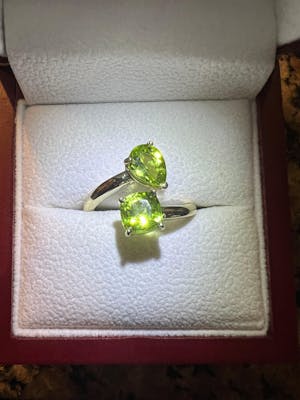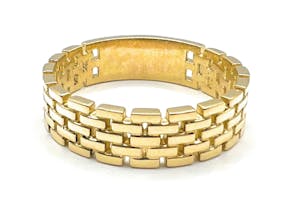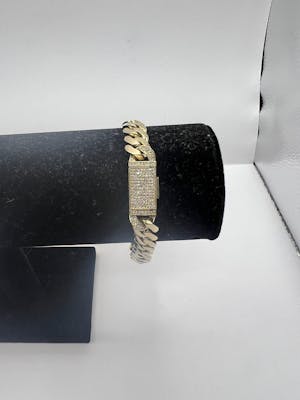Engagement
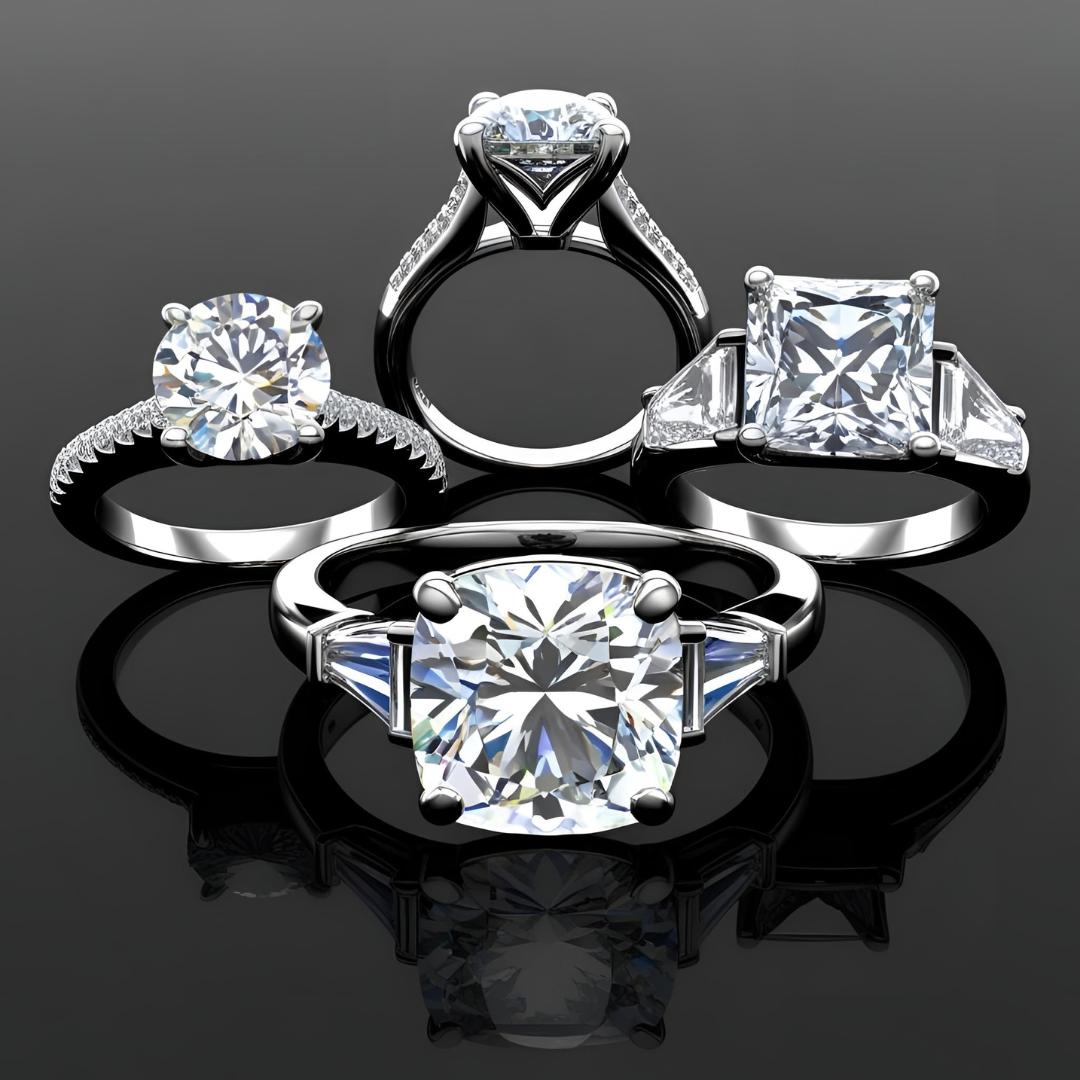
Engagement
G&M Jewelry focuses on crafting bespoke engagement rings, providing a tailored experience to bring each client's vision to life. Our skilled artisans work with premium materials and cutting-edge designs to create breathtaking, one-of-a-kind rings that reflect the couple's personal style and emotions. Whether you prefer a timeless look or a modern aesthetic, G&M Jewelry is committed to designing engagement rings that are truly exceptional.
Selecting the Perfect Diamond
When purchasing a diamond, once you've selected the shape, it's essential to evaluate the Four Cs: Carat, Cut, Color, and Clarity.
- Carat represents the diamond's weight, influencing its overall size.
- Cut determines how effectively the diamond interacts with light, enhancing its sparkle and brilliance.
- Color is graded from colorless to shades of yellow or brown, with colorless diamonds being the most prized.
- Clarity assesses the presence of natural imperfections, known as inclusions (internal) and blemishes (external).
Natural or Lab Diamond?
When deciding between natural and lab-grown diamonds, it's important to consider a few key differences:
Natural Diamonds:
1. Formation: Created deep within the Earth's mantle over billions of years through extreme heat and pressure.
2. Value Retention: Typically maintain their value better over time and are often preferred for their timeless appeal.
3. Rarity: Their natural scarcity enhances their desirability and sentimental significance.
4. Certification: Accompanied by certifications from respected gemological institutions, guaranteeing authenticity and quality.
Lab Diamonds:
1. Formation: Produced in a controlled lab setting using advanced technology that mimics the natural diamonds-growing process.
2. Affordability: Typically more cost-effective than natural diamonds of comparable size and quality.
3. Appearance: Identical in look to natural diamonds, sharing the same physical chemical, and optical characteristics.
4. Certification: Certified by reputable gemological institutes, just like natural diamonds, ensuring quality and authenticity.
Ultimately, selecting a diamond comes down to your personal preferences, budget, and values. Both options provide stunning and long-lasting gemstones, ensuring your engagement ring is a meaningful and cherished symbol of love.
Diamonds Shapes
-

Round Cut
-

Princess Cut
-

Oval Cut
-

Cushion Cut
-

Pear Cut
-

Emerald Cut
-

Radiant Cut
-

Heart Cut
-

Asscher Cut
-

Marquise Cut
Types of Engagement Rings
-

Solitaire
Solitaires are enduring and elegant. The name comes from the Latin word "solitarius," meaning alone or isolated, reflecting their signature design—a single, prominent center stone without extra diamond embellishments on the band. While the classic solitaire features a sleek, thin band with four to six prongs securing the diamond, variations can include unique elements like a split shank, textured details, or a wider band. As the quintessential engagement ring style, solitaires remain the most sought-after choice throughout history.
-

Halo
Halo engagement rings are designed with a radiant circle of gemstones encircling the center stone, adding extra brilliance and dimension. While these accents are typically diamonds, they can also include gemstones like sapphires, emeralds, or rubies for a personalized touch. Known for their dazzling effect, halo settings enhance the visual size of the center stone, making it appear larger and more striking. These designs come in various shapes, including round, square, and floral-inspired styles. Some feature additional accent stones along the band, while others maintain a sleek, unadorned look.
-

Three Stone
Three-stone engagement rings showcase a central gemstone flanked by two prominent accent stones, symbolizing a couple’s past, present, and future. Traditionally, these side stones are round, but they can also be crafted in various shapes, such as baguette or kite-cut. While some designs embrace a classic and refined aesthetic, others incorporate luxurious elements like additional accent stones along the band or a hidden halo for extra brilliance.
-

Pavé
Pavé engagement rings are designed with meticulously set accent diamonds that create a continuous sparkle along the band. Derived from the French word for "paved," this style features tiny melee diamonds closely positioned together, resembling a shimmering pathway. The delicate prong setting, which barely overlaps the stones, enhances their brilliance, making pavé rings a favorite among both jewelers and buyers for their radiant, eye-catching appeal.
-

Hidden Accent
Hidden accent engagement rings are designed to delight with unexpected sparkle. While they may appear as classic solitaires from a top-down view, a closer look reveals secret diamonds or gemstones tucked beneath the center stone or along the inner edge of the band. These hidden halos can be paired with traditional halos or additional accents along the band, as long as they maintain their signature element of surprise brilliance.
-

Bezel
Bezel engagement rings are designed with a metal rim that encircles and securely holds the center stone in place. This setting enhances the diamond or gemstone, offering a sleek and modern aesthetic. Bezel-set rings can range from minimalist solitaires to vintage-inspired designs or styles adorned with shimmering accents, allowing for a personalized and distinctive look based on the wearer's preference.
-

Split Shank
Split shank engagement rings showcase a band that gracefully divides into two or more strands as it approaches the center stone, creating a stylish and dimensional effect. This open, sculptural design enhances the prominence of the centerpiece, making it appear more striking. Split shank styles can range from simple solitaires to intricately engraved or diamond-accented designs, with variations including single, double, or even triple splits for a unique and elegant look.
-

East-West
East-west settings offer a modern twist by positioning an elongated center stone horizontally instead of the traditional vertical orientation. For example, while an emerald-cut diamond is typically set with its length facing upward, an east-west setting rotates it 90 degrees to sit across the finger. This distinctive style is gaining popularity for its contemporary appeal and can be designed as a sleek solitaire or enhanced with additional accents for extra brilliance.
Selecting an engagement ring is a meaningful and exciting journey. We know the process can feel overwhelming, but at G&M Jewelry, we're here to make it effortless. Our expert team is committed to assisting you at every step, helping you discover the perfect ring that reflects your love and commitment. Use the tools above to share a brief description of your ideal engagement ring, including your budget and finger size. (If you're unsure of your finger size, refer to the guide below.)
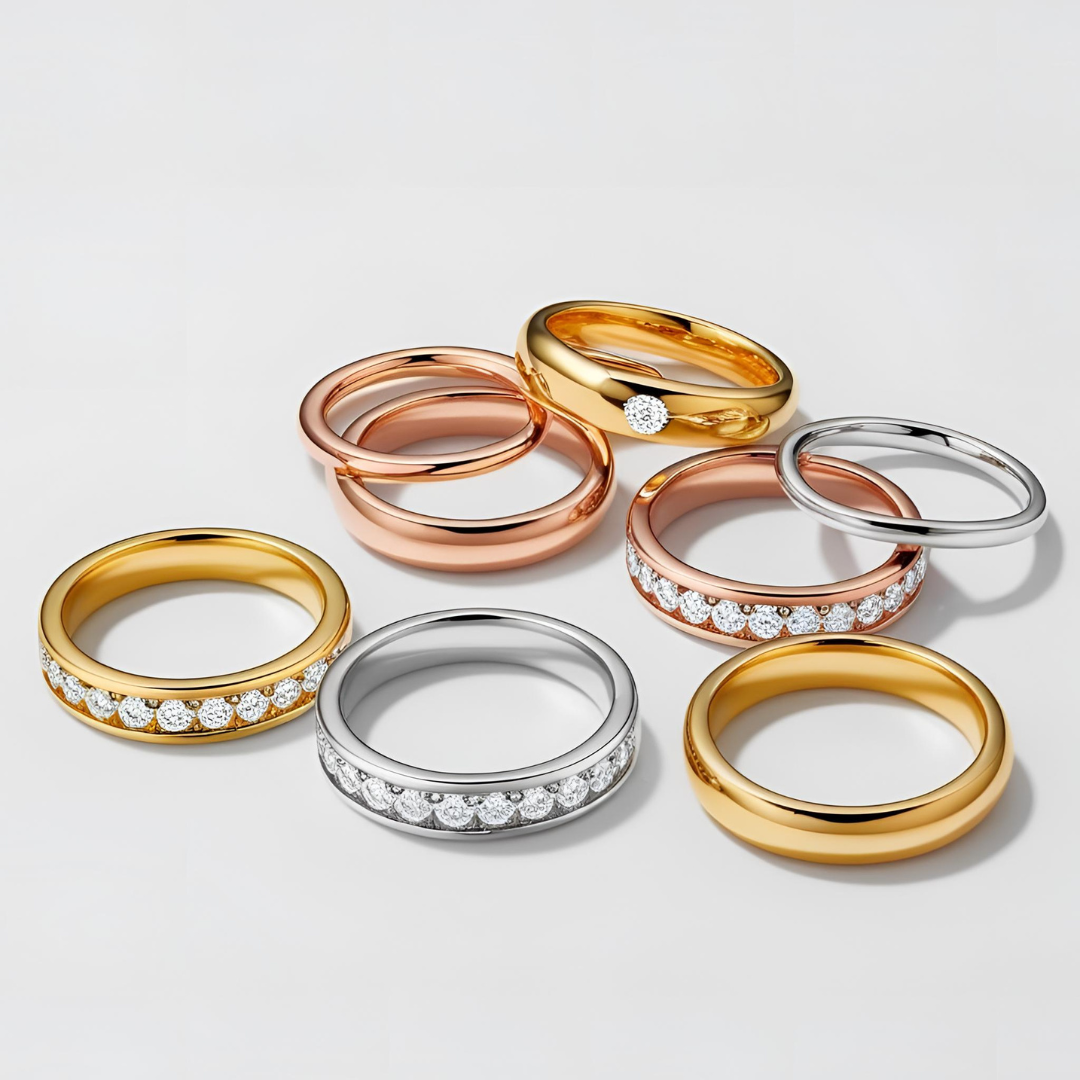
Matching Bands
Matching bands for engagement rings are crafted to enhance and harmonize with the engagement ring, ensuring a balanced and seamless appearance. Various styles of matching bands are available, each uniquely designed to complement different engagement ring settings and personal preferences.
Types of Matching Bands
-

Eternity Bands: Encircled with diamonds or gemstones around the entire band, these rings symbolize everlasting love and offer a radiant, luxurious complement to various engagement ring designs.
-

Channel-Set Bands: Featuring diamonds or gemstones embedded within a secure channel, this sleek and modern style pairs beautifully with channel-set engagement rings.
-

Contoured Bands: Designed to align perfectly with the engagement ring, these bands follow its curves and shape, making them ideal for rings with distinctive settings or larger center stones.
-

Straight Bands: A timeless and versatile option, these classic bands feature a simple, uncurved design that pairs well with most engagement rings.
-

Pavé Bands: Adorned with tiny diamonds or gemstones, these bands add extra brilliance and are a perfect complement to engagement rings with pavé detailing.
Each band style offers a unique aesthetic, allowing you to select one that enhances your engagement ring while reflecting your personal taste.
Finding Your Ring Size
First Ring? No Problem! Here’s How to Measure Your Finger:
- Take a thin strip of paper or a piece of string.
- Wrap it around your finger snugly—firm but not too tight for a comfortable fit.
- Mark where the ends meet, then lay it flat and measure the length with a ruler.
- Repeat the process a few times to ensure accuracy.
(Most engagement rings can be resized at no extra cost.)



























